Introduction
Artificial Intelligence as a Service (AIaaS) has emerged as a transformative force in the tech industry, offering businesses an alternative to in-house AI development.
The global AI as a Service market is projected to reach $77.04 billion by 2025, growing at a CAGR of 48.2% from 2020 to 2025 (MarketsandMarkets, 2020). This rapid growth reflects the increasing demand for accessible AI solutions across various sectors.
AI as a Service providers are proliferating, with tech giants and startups alike offering diverse solutions. According to Gartner, by 2025, the AI software market will account for 50% of the total AI market (Gartner, 2021). This trend is driven by the need for scalable, cost-effective AI implementations.
AI as a Service examples span from natural language processing to predictive analytics, catering to a wide range of business needs. A survey by O'Reilly found that 26% of organizations are already using AI as a Service solution, with another 43% evaluating or planning to use it (O'Reilly, 2021).
As businesses weigh the benefits of AI as a Service against in-house development, understanding the pros and cons of each approach becomes crucial for making informed decisions in this rapidly evolving landscape.
So continue reading to know more about the AI as a Service vs In-House Development.
What is AI as a Service (AIaaS)?
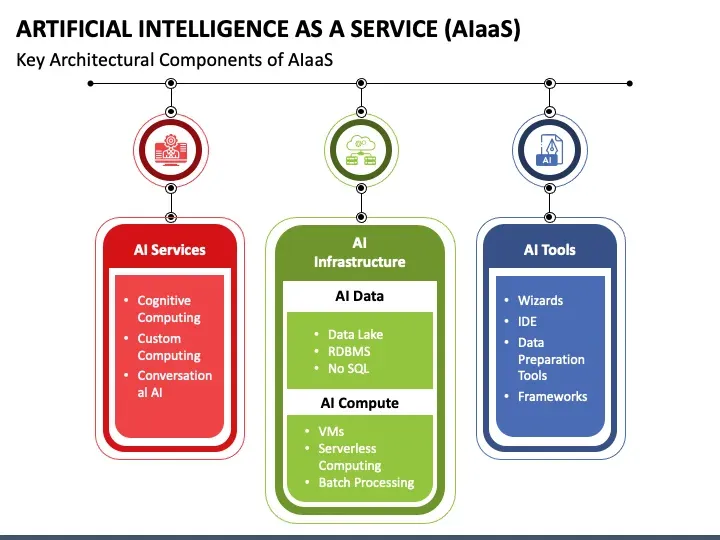
AI as a Service combines the flexibility of cloud computing with the power of AI technologies.
It enables companies to access and leverage AI capabilities without investing in expensive hardware or recruiting specialized talent.
This model allows businesses to use artificial intelligence services on a subscription basis, providing a cost-effective and scalable method to implement AI solutions.
Several AI as a service examples demonstrate its adaptability, from speech recognition and customer service chatbots to data analysis and predictive analytics.
Benefits of AI as a Service
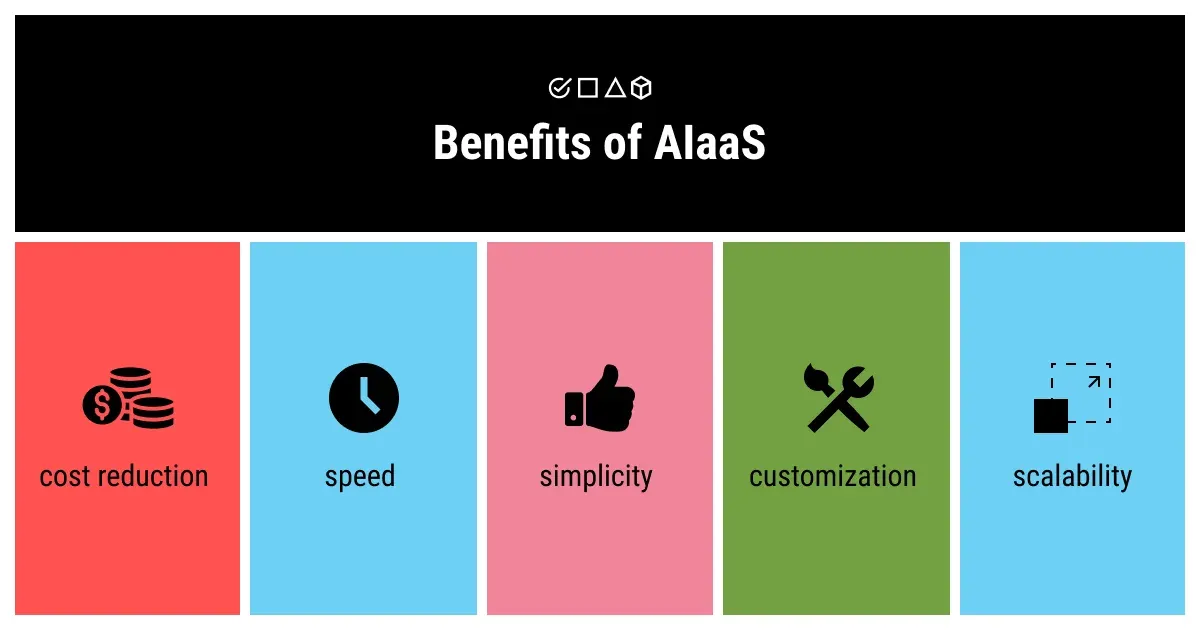
AI as a Service opens up a landscape of opportunities for businesses. By adopting this model, companies can enjoy numerous advantages, including reduced costs, access to the latest AI innovations, and the flexibility to scale operations.
Here’s a closer look at some of the core benefits:
Lower Cost & Faster Implementation
One of the standout benefits of AIaaS is its cost-effectiveness.
Businesses can avoid the significant upfront investment required for AI development by relying on AI as a service providers.
This means quick implementation of AI technologies without the financial burden of setting up a dedicated infrastructure or a specialized team. It's a lean approach to integrating advanced AI capabilities, efficiently reducing operational costs and time to market.
Easier Access to AI Expertise
Another significant advantage is the ease of access to AI expertise. AI as a Service providers have specialized knowledge and experience, providing businesses with sophisticated AI solutions without the need for in-house experts.
This not only simplifies the process of integrating AI into operations but also ensures that companies benefit from the latest advancements in the field.
Scalability – Ability to Adjust AI Usage as Needed
Scalability is a critical factor for businesses, and AIaaS excels in this area. Companies can easily scale their AI functionalities up or down based on current needs and demands without worrying about resource allocation or capacity issues.
This flexibility ensures that businesses can respond swiftly to market changes and customer needs. Thus making AI as a Service an incredibly adaptive tool.
Security and Maintenance Handled by Provider
With AI as a Service, security, and maintenance concerns are managed by the service provider. This relieves businesses from the stress and expense associated with these critical aspects.
AI as a Service providers ensure that AI solutions are up-to-date, secure, and functioning optimally, allowing businesses to focus on their core activities.
Wide Range of Pre-Built AI Solutions Available
Lastly, AI as a Service offers a wide array of pre-built AI solutions that cater to various business needs.
Whether it's automating customer service, enhancing data analytics, or streamlining operations, companies can choose from a plethora of ready-to-use AI tools.
This diversity not only accelerates the adoption of AI but also allows businesses to experiment and discover the best solutions for their unique requirements.
Drawbacks of AI as a Service

While AI as a Service is an excellent option for many, it might not suit everyone's needs. Here's why:
Limited Customization
AI as a Service is often a one-size-fits-all solution that may not align perfectly with the specific needs of your business.
Although AI as a service providers usually offers a range of customizable options and configurations, they may not match the exact requirements your company has, especially if you have a niche or highly specialized needs.
Vendor Lock-In
Another potential downside to using AI as a Service is vendor lock-in. This happens when you become dependent on a vendor's products and services and find it difficult to switch to another provider without substantial costs or inconvenience.
Businesses should carefully consider the long-term implications of choosing an AIaaS provider to ensure that future flexibility isn't compromised.
Suggested Reading:
Top 15 Companies That Offer AI as a Service (AIaaS) in 2024
Less Control Over Data
Data is one of your most valuable assets, and using AIaaS could mean you have less control over it.
When you opt for AI as a Service, understanding how your data is used, stored, and protected becomes pivotal.
The terms of service and privacy policies must be scrutinized to ensure that you're comfortable with the provider's data management practices.
Wide Range of Pre-Built AI Solutions Available
Although having a wide range of pre-built AI solutions at your disposal is often listed as a benefit, it can also be a drawback.
The paradox of choice can overwhelm businesses, and selecting the best suited AI solution from the multitude can be daunting. Moreover, pre-built solutions may not be the ideal fit for more complex, bespoke requirements.
In the journey toward leveraging artificial intelligence (AI), companies often find themselves at a crossroads between adopting AI as a Service (AIaaS) offered by third-party vendors or venturing into in-house development.
Understanding what in-house development entails and the distinct benefits it brings can guide organizations in making a decision that aligns best with their strategic goals and operational needs.
What is In-House Development?
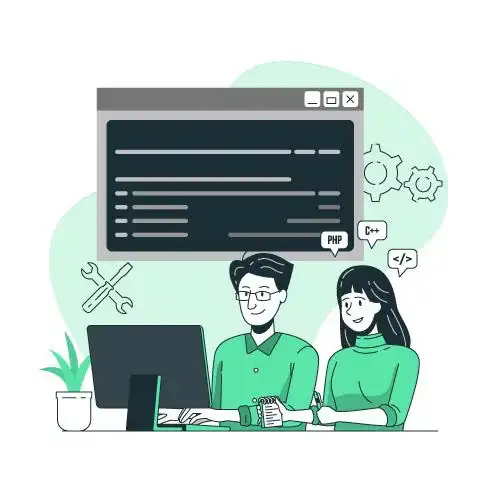
In-house development refers to the process where a company decides to create and manage its AI capabilities internally rather than outsourcing these services.
This approach requires assembling a team of AI experts, investing in the necessary technology, and dedicating resources towards the development, deployment, and maintenance of AI applications.
The essence of in-house development lies in its capacity for customization and integration, offering a more personalized solution that is crafted specifically for the host organization's unique challenges and objectives.
Benefits of In-House Development
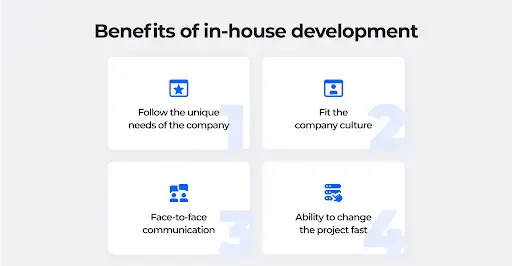
Choosing in-house development for AI projects carries a multitude of advantages:
Full Control and Customization
The most compelling benefit is the level of control and customization it offers. Organizations can tailor the AI solutions exactly to their specifications, adjusting functionalities to perfectly fit their operational needs and strategic vision.
This high degree of personalization ensures that the AI systems deliver maximum value, closely aligned with the company's specific requirements.
Easier Integration with Existing Systems
In-house developed AI systems are often easier to integrate with existing IT infrastructure and business processes.
Since the solutions are built from the ground up with the company’s current systems in mind, integration challenges are minimal compared to trying to fit a third-party AI as a service providers solution into a complex web of legacy systems.
This seamless integration enhances operational efficiency and minimizes disruption to existing workflows.
Ownership of Data
When developing AI solutions in-house, companies maintain complete control over their data.
This ownership ensures sensitive information remains within the confines of the organization, eliminating concerns about data privacy and security often associated with third-party vendors.
With full control over data, companies can also leverage their unique datasets more effectively, crafting AI solutions that offer differentiated value based on proprietary insights.
Potential for Long-Term Competitive Advantage
In-house development of AI can become a source of long-term competitive advantage. By building bespoke AI solutions that are tightly integrated with their operational strategies, companies can differentiate themselves in the marketplace.
Custom AI applications can drive innovation, enhance customer experiences, and streamline operations in ways that off-the-shelf AI as a service examples simply can’t match.
Moreover, owning the IP related to these custom solutions can safeguard a company’s competitive edge in the market.
Drawbacks of In-House Development
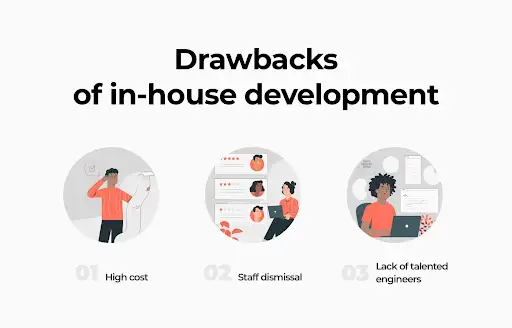
Despite the tailored fit that comes with building AI capabilities in-house, companies need to be aware of the potential drawbacks.
While bespoke development may initially appear attractive, practical challenges often arise, placing considerable strain on resources and internal processes. It's vital to scrutinize these considerations before taking the plunge into the world of custom AI solutions.
High Cost
A major hurdle with in-house development is the high cost associated with hiring and retaining top AI talent.
Specialists in AI are in high demand, commanding significant salaries, and benefits packages.
Factor in the expenses for ongoing training, tools, and infrastructure, and the financial commitments become sizable. These investments can be a deterrent, especially for smaller organizations with limited budgets.
Time-Consuming
Developing AI in-house is a time-consuming endeavor. It involves assembling a capable team, training staff, and iteratively developing and testing the AI system.
This process can take months or even years, during which technology and market conditions can change, potentially affecting the relevance of the project outcome.
Risk of Project Failure
AI development is a complex field fraught with uncertainties. Even with a skilled team, projects can face unforeseen complications and may fail to deliver the expected results.
These risks can range from technical challenges to algorithmic biases and data insufficiencies, leading to potential project failure or suboptimal performance.
Difficulty Finding and Keeping Skilled Staff
Beyond the challenge of an initial high cost, finding and maintaining a talented workforce in the competitive AI market is an ongoing issue.
The demand for skilled professionals often outstrips supply, meaning companies can struggle to attract the right people.
Additionally, retaining staff can become a struggle against competitors offering more lucrative opportunities, leading to disruptions and continuity issues.
Choosing the Right Approach
When weighing the options of AI as a Service (AIaaS) versus in-house development, organizations must take several key factors into account:
Budget limitations have a significant impact on the decision. If resources are tight, AI as a Service may provide a cost-effective and accessible entry point into AI capabilities without the need for heavy upfront investment.
Project complexity is another decisive factor. Some AI applications require a high degree of customization, making in-house development more suitable.
However, simpler or more generalized AI needs might be met effectively with existing AI as a Service examples.
The need for customization and control will also guide the choice. If proprietary data or highly tailored solutions are a priority, in-house development could provide the necessary exclusivity and customization.
Conversely, for more standard applications, the efficiencies of AI as a Service providers may suffice.
Organizations must also ponder the long-term strategic value of their AI initiatives. If building a core capability is the goal, in-house development might be the right investment.
However, if a company seeks to experiment with AI or requires quick deployment, AIaaS offerings may provide the flexibility and speed demanded by the project.
Assessing these factors allows companies to make an informed decision that aligns with their strategic goals, resource availability, and risk tolerance.
Whether opting for the ease of AI as a Service or the deep-rooted capabilities of in-house development, the right choice for one business might not be the best fit for another.
Therefore, a clear-eyed analysis of each approach's trade-offs is essential for a successful AI adoption strategy.
Conclusion
In conclusion, the choice between AI as a Service and in-house development ultimately depends on a company's specific needs, resources, and long-term goals.
AI as a Service providers offer quick implementation, scalability, and access to cutting-edge technology without the need for extensive in-house expertise.
Examples of AI as a Service include chatbots, predictive analytics, and image recognition tools, which can be readily integrated into existing systems.
However, in-house development provides greater customization and control over AI solutions, albeit with higher initial costs and longer development times. Companies must carefully weigh these factors when deciding their AI strategy.
Regardless of the chosen approach, it's clear that AI will play a crucial role in shaping the future of business operations and innovation.
Companies that successfully leverage AI, whether through services or in-house development, will be well-positioned to thrive in an increasingly AI-driven world.
Frequently Asked Questions (FAQs)
What are the advantages of AI as a Service over in-house development?
AI as a Service offers cost-effectiveness, scalability, faster deployment, access to specialized expertise, and reduced maintenance burden compared to in-house development.
What challenges do companies face with in-house AI development?
Challenges include high upfront costs, longer development cycles, recruiting and retaining specialized talent, and the need for ongoing maintenance and updates to keep pace with evolving technology.
How does AI as a Service simplify implementation for businesses?
AI as a Service simplifies implementation by offering pre-built models, APIs, and tools that can be easily integrated into existing systems, reducing the time and resources required for deployment.
What factors should businesses consider when deciding between AI as a Service and in-house development?
Factors to consider while choosing between AI as a Service and in-house development includes budget constraints, time-to-market requirements, scalability needs, data privacy regulations, available internal expertise, and the long-term strategic goals of the organization.
What are the risks associated with relying solely on AI as a Service?
Risks of solely relying on AI as a Service include vendor lock-in, lack of control over proprietary algorithms and data, potential service disruptions, and the possibility of the provider discontinuing the service or changing pricing models.
How can businesses mitigate risks when using AI as a Service?
Mitigation strategies of AI as a Service include conducting thorough vendor evaluations, negotiating robust service level agreements (SLAs), implementing data governance policies, and maintaining contingency plans for service interruptions.
What are the long-term implications of choosing AI as a Service versus in-house development?
Long-term implications pf choosing AI as a Service include the impact on innovation, flexibility, competitive advantage, total cost of ownership, and the ability to adapt to changing business requirements and technological advancements.
What role does the complexity of AI tasks play in the decision between AI as a Service and in-house development?
Complex tasks may require in-house development for greater customization and control, while simpler tasks may be effectively addressed through AI as a Service, balancing cost, time, and resource considerations.


